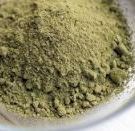Chronic inflammation has been found to mediate a wide variety of diseases, including cancer, cardiovascular diseases, diabetes, arthritis, Alzheimer’s disease, pulmonary diseases, and autoimmune diseases. The arachidonic acid pathway constitutes one of the main mechanisms for the production of inflammation, as well as controlling homeostatic function. Arachidonic acid (AA) is an unsaturated fatty acid that the body uses to synthesize regulatory molecules such as prostaglandins (hormone like chemical messenger) and thromboxanes (involved in platelet aggregation and blood clotting). Arachidonic acid (AA) is a form Omega 6 fatty acid. Arachidonic acid (AA), gamma linolenic acid (GLA) and linoleic acid (LA) are three forms of Omega 6 fatty acids. Linoleic acid is converted to gamma-linolenic acid in the body and then further broken down to AA. Omega 6 fatty acid in the form of AA can be found in egg yolks, meats (organs in particular), red meat dairy, shellfish and other animal based food items. The human body needs “some” AA, but too much can be toxic. If taken in excess, it can lead to a number of serious health risks including increased risk of cancer, because it promotes inflammation. AA is the major precursor of several classes of signal molecules and alteration of its metabolism is involved in human carcinogenesis.
In response to poor dietary choices, our bodies suffer an overload of AA, and the body increases production of enzymes like 5-Lipoxygenase (5-LOX) to remove AA. There are three main LOX enzymes that are known to be involved in the leukotriene pathway, 5-LOX, 12-LOX, and 15-LOX. Most attention has focused on 5-LOX, which appears to be the key enzyme when it comes to blocking leukotriene synthesis. 5-LOX is expressed mainly in leukocytes, dendritic cells and in foam cells of atherosclerotic tissue (in other cells synthesis is blocked by DNA methylation). 5-LOX is a key enzyme in the metabolism of AA to leukotrienes. 5-LOX converts AA to leukotrienes, which are able to enhance proliferation, increase survival, and suppress apoptosis of human cells. Leukotrienes are potent lipid mediators that are significantly involved in immunoregulation, asthma, inflammation and several allergic conditions. Inflammatory mediators such as leukotrienes cause an increased expression and re-distribution of proteins, characteristic of transformed cells, in normal cells. These alterations involve distinct upstream signaling mechanisms and lead to an altered rate of apoptosis and proliferation, changes that could increase the risk for a subsequent tumour development. These mediators could possibly explain the relation between inflammatory conditions and tumour development.
Roles of inflammation in cancer initiation, progression, and metastasis.
Regulation of inflammation in cancer by eicosanoids.
Beta-adrenergic and arachidonic acid-mediated growth regulation of human breast cancer cell lines.
Structures and mechanisms of enzymes in the leukotriene cascade.
Leukotriene B4 creates a favorable microenvironment for murine melanoma growth.
5-LOX has been implicated in the development and progression of cancers including lung, liver, prostate, pancreatic, colorectal, brain, breast and esophageal cancers. Several pieces of experimental data form the basis for this hypothesis and suggest a correlation between 5-LOX expression and tumor cell viability. First, several independent studies documented an overexpression of 5-LOX in primary tumor cells as well as in established cancer cell lines. Second, addition of 5-LOX products to cultured tumor cells also led to increased cell proliferation and activation of anti-apoptotic signaling pathways. 5-LOX antisense technology approaches demonstrated impaired tumor cell growth due to reduction of 5-LOX expression. Lastly, pharmacological inhibition of 5-LOX potently suppressed tumor cell growth by inducing cell cycle arrest and triggering cell death via the intrinsic apoptotic pathway.
Lipoxygenase metabolism: roles in tumor progression and survival.
5-lipoxygenase: underappreciated role of a pro-inflammatory enzyme in tumorigenesis.
5-Lipoxygenase contributes to the progression of hepatocellular carcinoma.
Lipoxygenase-5 is overexpressed in prostate adenocarcinoma.
5-Lipoxygenase, a marker for early pancreatic intraepithelial neoplastic lesions.
Increased expression of 5-lipoxygenase is common in clear cell renal cell carcinoma.
5-LOX inhibitors induce programmed cell death by an enhanced membrane expression of TRAIL receptors on the membranes of cancer cells, and raise the possibility that the combination of 5-LOX inhibitor and TRAIL is a promising strategy for cancer treatment. In addition, these inhibitors also activate other death signaling pathways in
cancer cells.
Inhibition of 5-lipoxygenase pathway suppresses the growth of bladder cancer cells.
The mechanisms of lipoxygenase inhibitor-induced apoptosis in human breast cancer cells.
 Boswellia extracts emerged as the most prominent natural sources of 5-LOX-inhibiting compounds. AKBA (acetyl-keto-beta-boswellic acid), a principal component of boswellia, is a 5-LOX inhibitor. AKBA acts by numerous mechanisms to prevent cancer cells from proliferating. It induces apoptosis by switching on death receptor on cancer cell surfaces by activation of apoptotic pathways inside cancer cells. AKBA also activate the PI3K/Akt pathway and inhibition of the PI3K pathway significantly enhances AKBA-induced apoptosis. AKBA suppresses activity of CXCR4 that cancer cells use to trigger the metastases. AKBA enhances apoptosis induced by cytokines and chemotherapeutic agents, inhibits invasion, and suppresses osteoclastogenesis through inhibition of NF-kappaB-regulated gene expression. And AKBA further inhibits tumor growth by suppressing a growth factor, VEGF (vascular endothelial growth factor), required by cancers to grow necessary new blood vessels. Boswellic acid also blocks important signaling molecules required for cancer cell replication. Boswellia oil extracts can distinguish between healthy and cancerous tissue, suppressing tumor cell viability but sparing normal cells.
Boswellia extracts emerged as the most prominent natural sources of 5-LOX-inhibiting compounds. AKBA (acetyl-keto-beta-boswellic acid), a principal component of boswellia, is a 5-LOX inhibitor. AKBA acts by numerous mechanisms to prevent cancer cells from proliferating. It induces apoptosis by switching on death receptor on cancer cell surfaces by activation of apoptotic pathways inside cancer cells. AKBA also activate the PI3K/Akt pathway and inhibition of the PI3K pathway significantly enhances AKBA-induced apoptosis. AKBA suppresses activity of CXCR4 that cancer cells use to trigger the metastases. AKBA enhances apoptosis induced by cytokines and chemotherapeutic agents, inhibits invasion, and suppresses osteoclastogenesis through inhibition of NF-kappaB-regulated gene expression. And AKBA further inhibits tumor growth by suppressing a growth factor, VEGF (vascular endothelial growth factor), required by cancers to grow necessary new blood vessels. Boswellic acid also blocks important signaling molecules required for cancer cell replication. Boswellia oil extracts can distinguish between healthy and cancerous tissue, suppressing tumor cell viability but sparing normal cells.
Unfortunately dietary boswellia ectracts are characterized by poor solubility and bioavailability, which means that most of what we swallow goes directly into our gastrointestinal area and is expelled.
BosturZym contains an “adaptogenic” mixture of fermented herbal compounds including boswellic acid (AKBA), curcumin and turmerine in a synergistic proprietary formula. BosturZym is the one and only product in the world that has perfect solubility and bioavailability of these compounds enough to induce apoptosis in cancer cells.
Frankincense oil derived from Boswellia carteri induces tumor cell specific cytotoxicity.
In addition to the direct inhibition of 5-LOX activity by Boswellia extracts, the sleep hormone melatonin made by body’s pineal gland is able to activate opioid receptors indirectly to inhibit expression of 5-LOX and Cox 2. Melatonin inhibits the synthesis of the 5-LOX via its activation of nuclear receptors.
Melatonin: a hormone that modulates pain.
The nuclear receptor for melatonin represses 5-lipoxygenase gene expression in human B lymphocytes.
 Esculetin, a phenolic compound, acts as a 5-LOX inhibitor. Esculetin is reported to display anti-inflammatory and antioxidant properties, as well as induce cell cycle arrest and apoptosis. In the presence of Esculetin and HA14-1 expression of the death receptor DR4 has been observed to be upregulated and extracellular-regulated kinase (ERK) to be activated. Other studies suggest that Esculetin upregulates death receptor DR5 protein expression, and enhances TRAIL-induced apoptosis. Additionally, reports demonstrate that Esculetin also inhibits the activity of 12-LOX, and decreases leukotriene biosynthesis during 5-LOX inhibition.
Esculetin, a phenolic compound, acts as a 5-LOX inhibitor. Esculetin is reported to display anti-inflammatory and antioxidant properties, as well as induce cell cycle arrest and apoptosis. In the presence of Esculetin and HA14-1 expression of the death receptor DR4 has been observed to be upregulated and extracellular-regulated kinase (ERK) to be activated. Other studies suggest that Esculetin upregulates death receptor DR5 protein expression, and enhances TRAIL-induced apoptosis. Additionally, reports demonstrate that Esculetin also inhibits the activity of 12-LOX, and decreases leukotriene biosynthesis during 5-LOX inhibition.
Esculetin enhances TRAIL-induced apoptosis through DR5 upregulation in human oral cancer SAS cells.
Caffeic Acid is an endogenous phenolic phytochemical that exists in plants and many foods. A major metabolite product upon hydrolization of chlorogenic acid, caffeic acid inhibits a number of lipoxygenases such as 5-LOX, in a non-competitive manner, and 12-LOX inhibiting leukotriene synthesis resulting in further inhibition of immunoregulation. At high doses Caffeic Acid has also been shown to inhibit arachidonic acid metabolism in platelets, as well as stimulating prostaglandin synthesis.
Caffeic acid derivatives: in vitro and in vivo anti-inflammatory properties.
Analogues of N-hydroxycinnamoylphenalkylamides as inhibitors of human melanocyte-tyrosinase.
 Manassantin, a dilignan isolated from Saururus chinensis, has been suggested to exert various biological activities, such as neuroleptic, anti-inflammatory and human acyl-CoA: cholesterol acyltransferase (ACAT) inhibitory activities. Manassantin inhibits 5-LOX translocation and leukotriene biosynthesis.
Manassantin, a dilignan isolated from Saururus chinensis, has been suggested to exert various biological activities, such as neuroleptic, anti-inflammatory and human acyl-CoA: cholesterol acyltransferase (ACAT) inhibitory activities. Manassantin inhibits 5-LOX translocation and leukotriene biosynthesis.
Methy jasmonate, a plant stress hormone, also specifically inhibits the activity of the 5-LOX. This induces apoptosis in prostate cancer cell lines. Jasmonates act as signal transduction intermediates when plants are subjected to environmental stresses such as UV radiation, osmotic shock and heat.
The prescription drug Zileuton (trade name ZYFLO) is used for the maintenance treatment of asthma. Zileuton is an orally active inhibitor of 5-LOX, and thus inhibits leukotrienes.
Jasmonates are phytohormones with multiple functions, including plant defense and reproduction.
BIOSYNTHESIS AND ACTION OF JASMONATES IN PLANTS.
Cox-2, the inducible isoform of Cox (cycloxygenase), has emerged as the key enzyme regulating inflammation, and promises to play a considerable role in cancer. The combination of Cox-2 inhibitors and specific 5-LOX inhibitors may be an effective method for controlling cancer development. Some dual COX and 5-LOX inhibitors are chebulagic acid, quercetin, green tea catechins, neem, turmeric (curcumin), milk thistle (silymarin and silibinin), Flavocoxid and BosturZym. Celebrex, generic drug name celecoxib, is the only Cox-2 selective NSAID currently on the market. 5-LOX inhibitors alone or in combination with dual COX /5-LOX inhibitors and Celebrex could be useful to prevent local recurrence after resection or as palliative option for advanced cancer.
Regulation of COX and LOX by curcumin.
Even if drug therapy successfully blocks the Cox-2 and 5-LOX enzyme systems, arachidonic acid can still be converted into other damaging molecules, such as epoxy derivatives. So, another approach to treating the diseases involving eicosanoids seems desirable. Eicosanoids are produced primarily from arachidonic acid that has been released from cell membrane phospholipids. Diets low in arachidonic acid, omega-6 fatty acids, saturated fats, high-glycemic food and overcooked food can suppress inflammatory factors in the body. Not all of the phospholipids in cell membranes include arachidonic acid, only those that were derived from certain dietary fatty acids, mainly linoleic acid. The concept of dietary control over these diseases is based, in part, on starving the eicosanoid system by reducing the fatty acids (specifically, the polyunsaturated fatty acids such as soybean oil, corn oil, safflower oil, grape seed oil, poppy oil and sunflower oil) that can eventually make arachidonic acid, thereby slowing down the production of eicosanoids when a stimulus occurs. Fish oil, flaxseed oil and perilla seed oil help to lower Cox-2 and 5-LOX activity in the body.